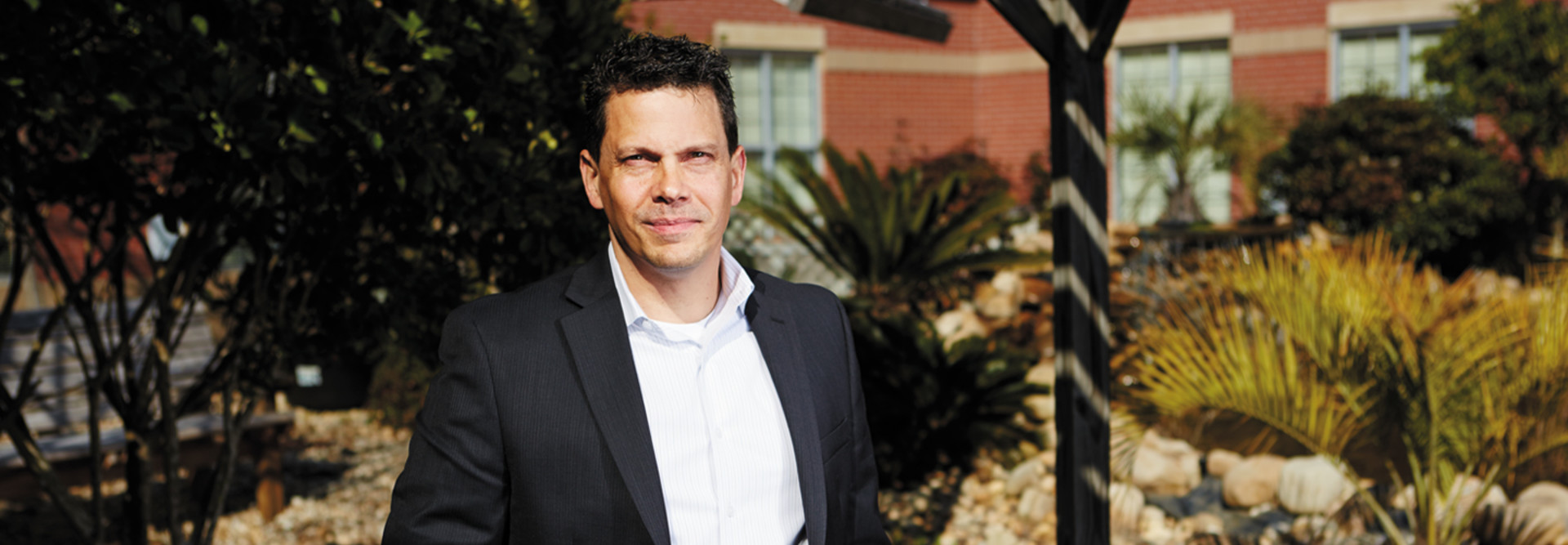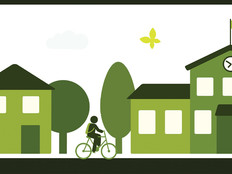Schools Push Wi-Fi Accessibility to the Four Corners of Campus
For the Lamar County School District, connected classrooms aren’t enough.
Ross Randall, director of technology for the southern Mississippi district wants connected courtyards, connected football fields and even connected parking lots.
“If somebody is on my campus — I don’t care where they are — I want them to be able to have Internet access,” he says.
Lamar County upgraded its Wi-Fi network last spring, ripping out decade-old 802.11g access points and replacing them with 802.11ac equipment. The older network was originally “built for convenience, not for capacity,” Randall says, and the upgrade was necessary to accommodate initiatives such as the district’s bring-your-own-device program.
As demands on the school networks have increased, so too have the expectations of users. While the availability of wireless Internet was a pleasant surprise in most settings only a few years ago, it’s now something that many people take for granted. Randall wants to not only meet that expectation but exceed it by providing Wi-Fi on every inch of school property — indoors and out.
The district has positioned some of its indoor access points to penetrate into parking lots and other outdoor spaces, but it is also beta testing four Aerohive AP1130 outdoor access points at its high school. Eventually, Randall says, the district wants to deploy a total of 25 to 30 of the outdoor access points so it can provide full coverage to its campuses.
Creating Outdoor Learning Spaces Opens Learning Opportunities
Nolan Greene, a research analyst in IDC’s network infrastructure group, says that schools “tend to be 99 percent focused” on indoor versus outdoor Wi-Fi. But, Greene says, businesses are already starting to turn their attention to the outdoors — and schools should examine whether it makes sense for them to do so as well.
“There can be value to having outdoor classrooms with Wi-Fi connectivity,” Greene says.
The truth is, teachers and students are likely to use Wi-Fi indoors far more often than outdoors in most schools. The majority of instruction happens inside the school building, and that’s not likely to change just because a school installs outdoor access points. Still, many educators see the potential for a return on their investment.
Harlem Free Wi-Fi, an effort that students in Harlem Children’s Zone schools have helped promote, is the country’s largest continuous free outdoor wireless network, covering
95 city blocks.
SOURCE: NYC.gov
“We’re in Arizona. We have 360 days of sunshine,” says John Andrews, CIO of Dysart Unified School District in Surprise. “So we wanted to make sure that, if the teacher wanted to have a class outside, the network connection would not be a problem. The traditional classroom is going away, slowly but surely. I’ve seen art teachers and band teachers hold classes outside.”
Dysart USD recently completed a three-year overhaul of its Wi-Fi network, which included the installation of outdoor access points from Aruba Networks at all 24 of its schools.
While an English class might only venture outdoors to take advantage of a sunny spring day (in which case a courtyard with wireless Internet is still pretty helpful), Andrews points out that some classes routinely meet outside — for example, shop and architecture.
“They don’t have to worry about connecting to the Internet to complete their research” because of the outdoor Wi-Fi, Andrews says. “It’s having information right in front of them, instead of going back to the classroom and taking notes. Without the data right in front of you, you cannot make the right decisions. That’s the culture we want to create.”
Outdoor Wi-Fi is obviously useful for schools with dedicated outdoor learning areas, such as wetlands or vegetable gardens used by science classes. But Lamar County’s Randall also envisions outdoor Wi-Fi helping students to learn on their own throughout the day — during lunch breaks or while they’re waiting for soccer practice to start.
“They may be sitting in the football stands waiting to do something,” Randall says. “I don’t want that to be idle time for them, when they could be getting online and catching up on their homework.”
Connections Beyond Curriculum Are Expected
Outdoor Wi-Fi can continue to benefit students and others after the school day is over too. Students and even staff members who lack high-speed Internet access at home drive to school and sit in the parking lot to get online during the evening and on weekends, turning the lot into a 24-hour outdoor computer lab of sorts.
“Especially on the weekends, our Internet is really fast,” says Randall, explaining the draw. “It’s no different from pulling up to McDonald’s and going to one of their booths [to connect], except you don’t have to buy anything.” Randall says the district hopes to add picnic tables where people can sit and go online on nice days.
Even community members take advantage of the outdoor Wi-Fi, Randall says, although he notes that they’re subjected to a slightly heavier filter than school users.
The district is also using outdoor access points for a practical, noninstructional purpose: as a bridge to get Wi-Fi to temporary trailers being used since the field house burned down. “It’s a lot more cost-effective for us to get a couple of access points than to have someone come out and install a couple hundred yards of fiber,” Randall says.
Dysart’s Andrews says that, in addition to aiding learning during the school day, his district’s outdoor Wi-Fi provides guests attending events a better experience and is also used by coaches on playing fields.
In fact, athletics was one of the drivers behind Dysart’s push for outdoor Wi-Fi, which lets coaches log injuries and accidents and notify school officials about them in real time.
“It’s worth all the money to be able to report and record accurate information about an injury and not wait to go back to your office and pull out a form,” Andrews says.
Building for the Future Without Breaking the Budget
Some school leaders don’t have a specific vision for how they’ll use their outdoor Wi-Fi. They just know they want to be ready with it when an opportunity presents itself.
“We wanted to be proactive,” says Chris Renner, principal of Bath Elementary School in Lima, Ohio. “The last thing we wanted to do was limit ourselves because we didn’t think ahead.”
The students and staff at Bath moved into a new building in January — a time of year when there isn’t much danger of overloading the school’s new outdoor wireless access points — and Renner says he’s still not exactly sure how the school community will take advantage of its newfound outdoor connectivity.
Renner imagines that parents will hop on the network while they’re waiting for their kids to get done with sports practices and says he sees potential for instructional uses, especially in art and science classes, which both have easy access to outdoor space in the new school. But he says he’ll be patient and flexible as his teachers figure out how they can best use outdoor Wi-Fi to help students learn.
“It’ll be a slow process,” Renner says. “We’re just trying to learn, one day at a time. Who knows where we’re headed? It could be pretty powerful.”









